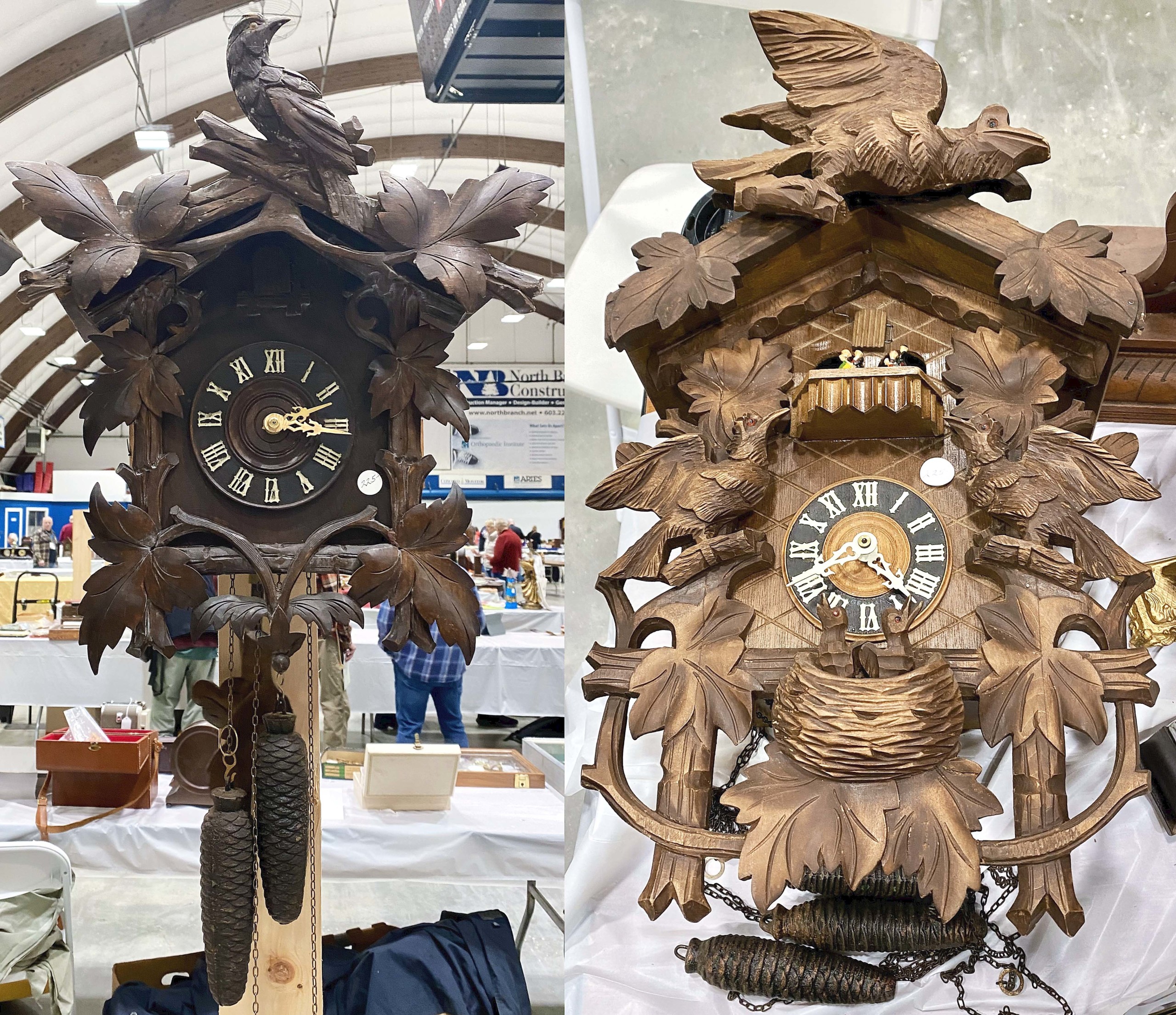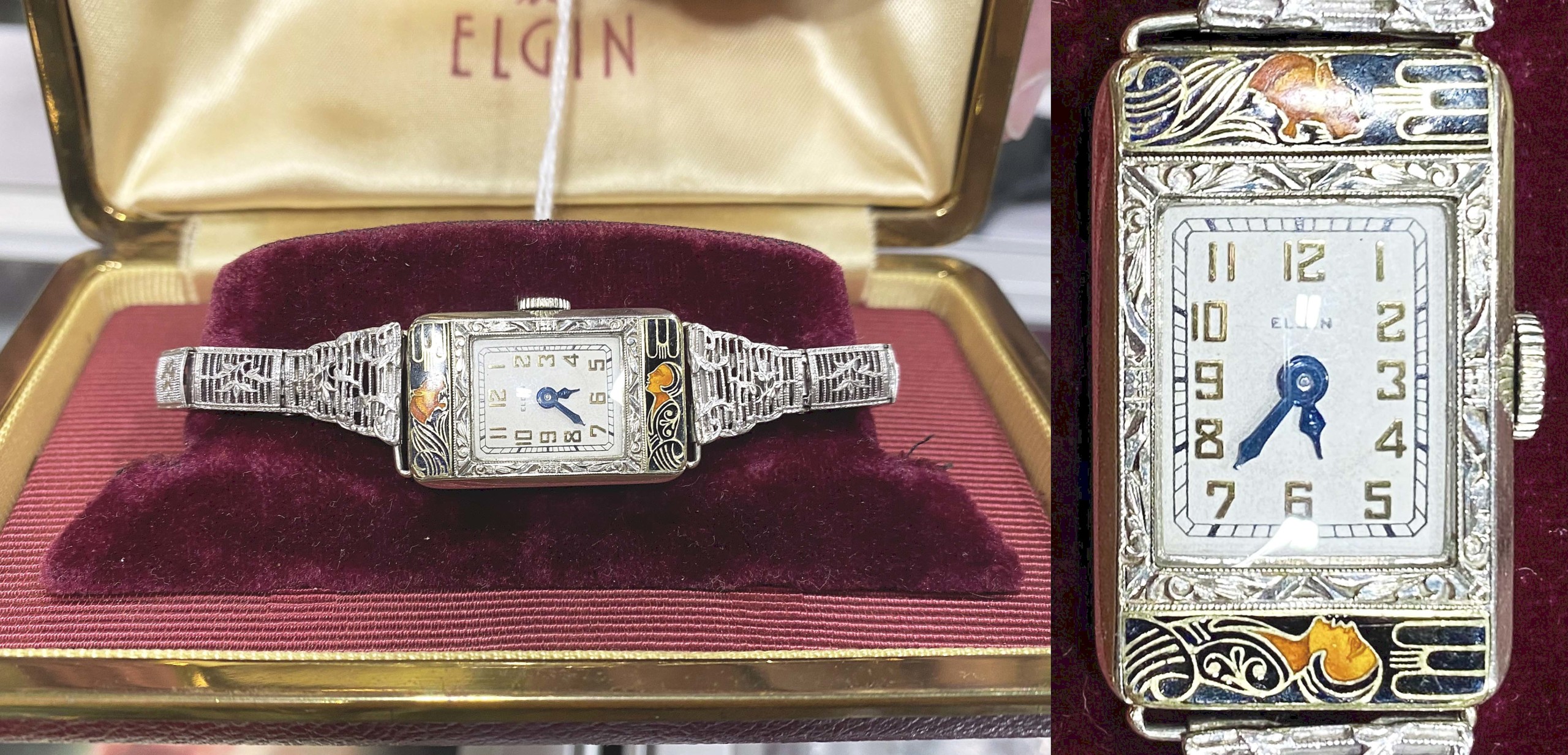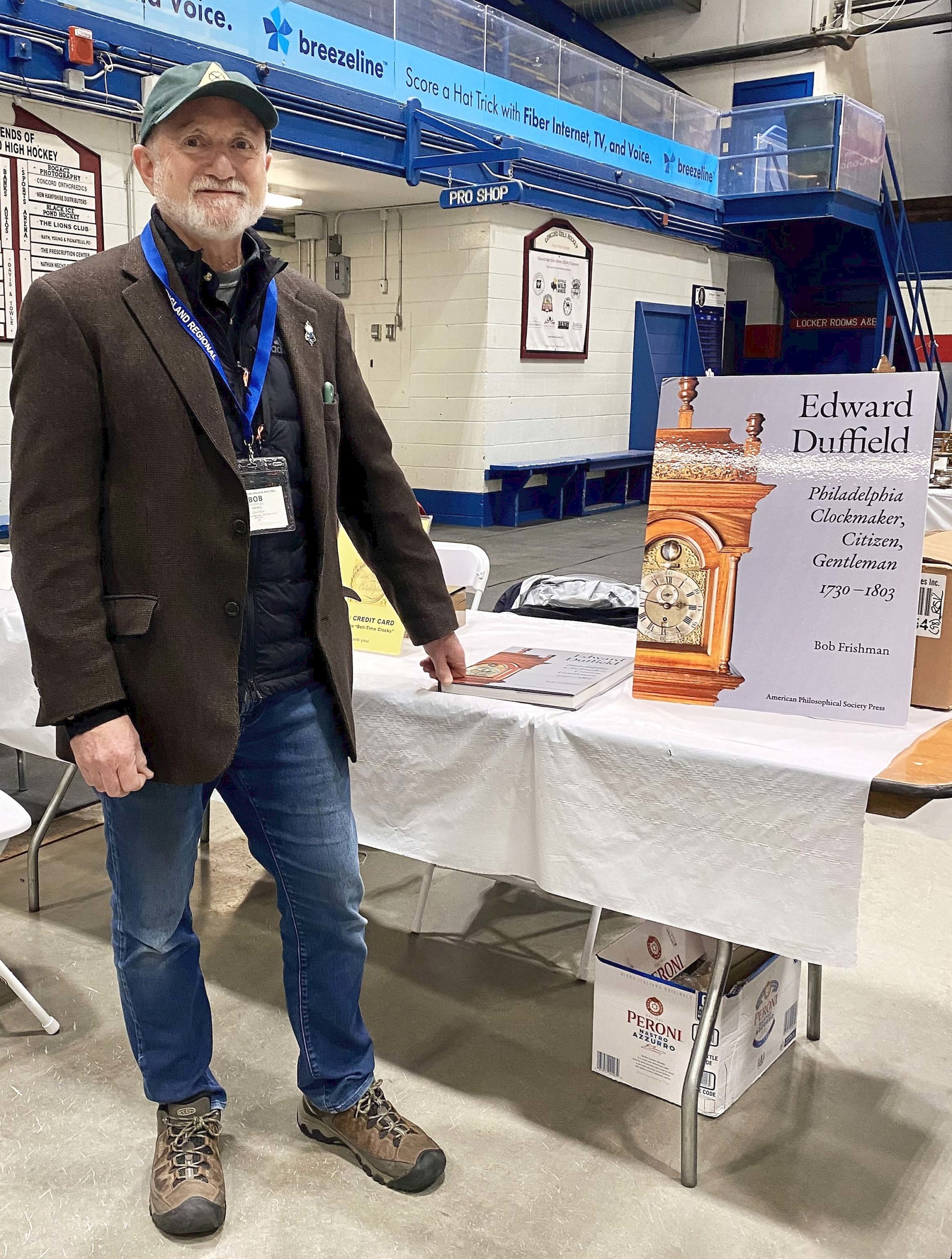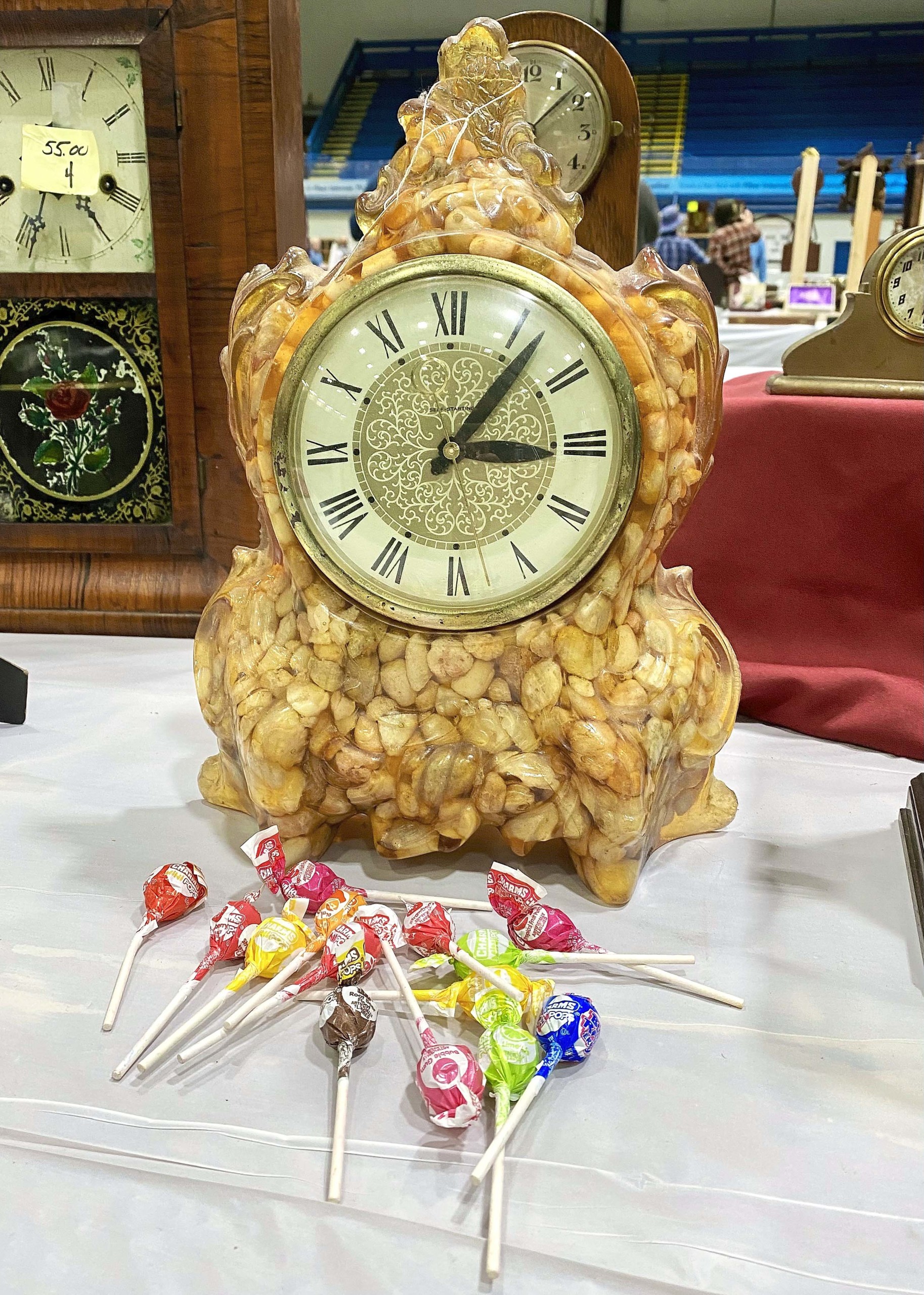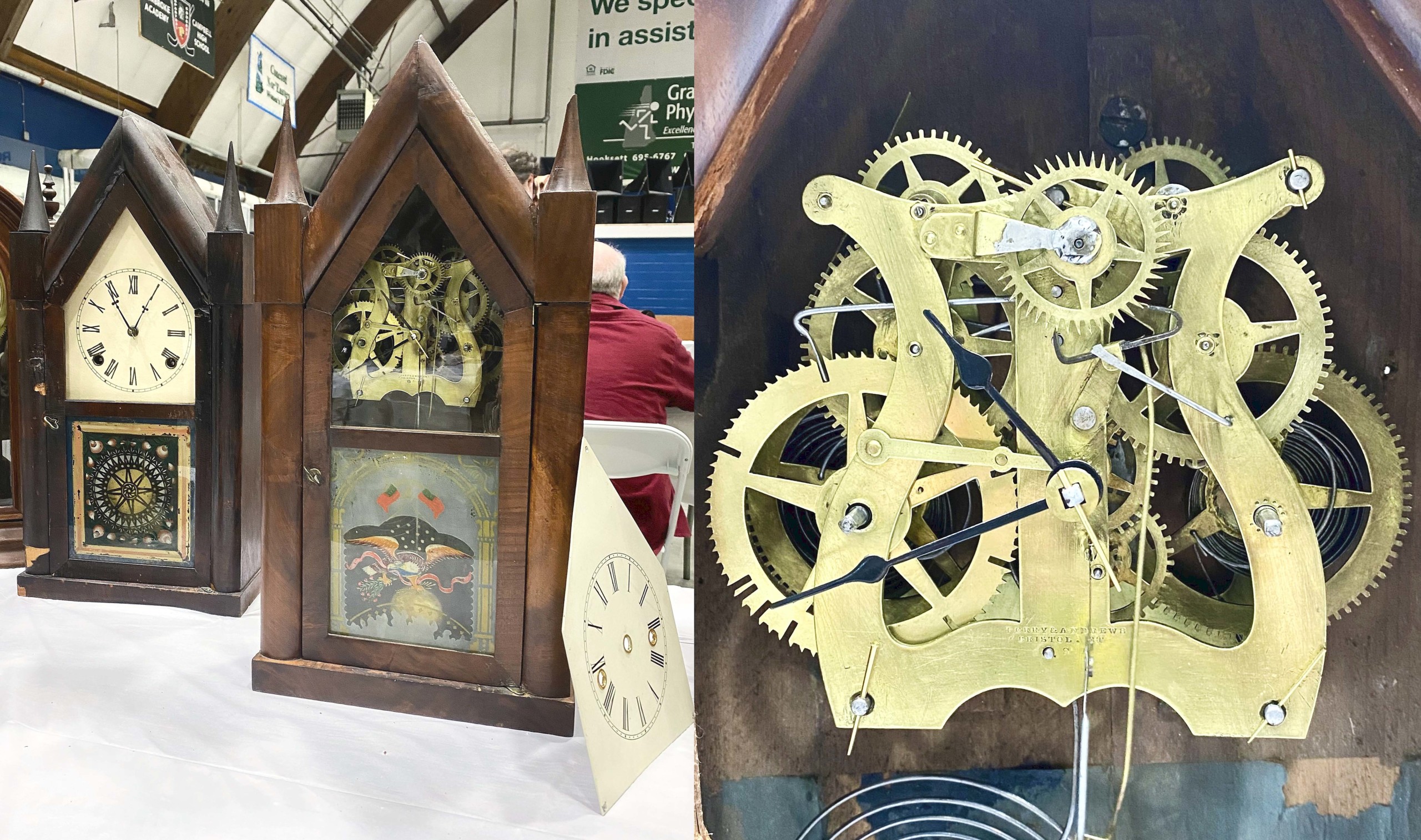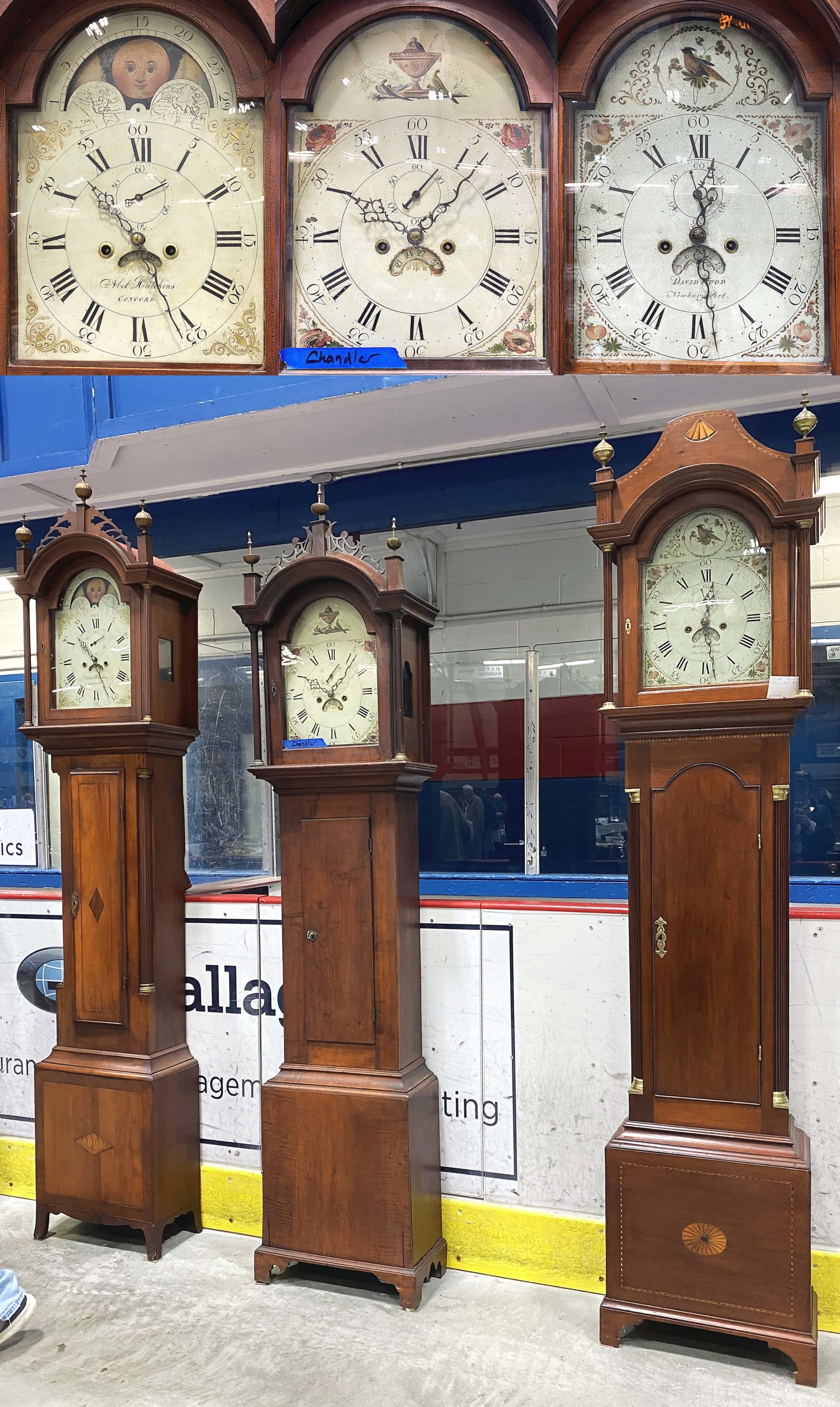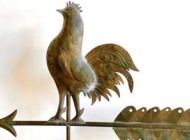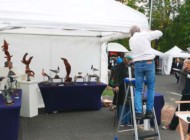
Lively conversations with customers, colleagues and old friends filled The Douglas N. Everett Arena on April 25 and 26.
Review & Photos by Z.G. Burnett
CONCORD, N.H. — The National Association of Watch & Clock Collectors (NAWCC) opened its second annual New England Regional on April 25 and 26, at the Douglas N. Everett Arena. The event space’s floor was fully mapped out with dealer tables that offered almost every type of timepiece imaginable, at least to the average observer. On Friday, the Regional welcomed more than double the amount of visitors it saw in 2024, and traffic was still steady by Sunday’s noon closing.
Clocks and watches are fewer and farther between in the digital age, but NAWCC members strive to keep the trade and tradition of these functional art objects alive for future generations by coming together for events such as these. Educating guests is a primary mode of recruitment, and those who spoke with us were more than willing to give a plethora of details about anything in their displays. The variety to be seen was almost overwhelming. Prices varied from five dollars to tens of thousands, from the tiniest screws imaginable to towering grandfather or tall case clocks. Although one might feel sheepish about walking in with a modest Timex, a welcoming dealer commented, “If anyone wants to yuck somebody’s yum about that, they can go pound sand!” It was truly the spirit of the New England Regional.
Wristwatches are still worn frequently today, even if the majority are Apple Watches, but pocket watches have yet to make a comeback. Up until the mid Twentieth Century, most gentlemen from the middle and upper classes would use these to keep time and often accessorized them with particular chains and fobs. Waistcoats from the period even featured specific pockets for them. Of course, the real proof was in the pudding, or in this example, the pocket watch itself.

Patek Philippe debuted the first minute repeating, perpetual calendar watch with an additional moon phase dial in 1874; this yellow gold example dated to 1900. Mishtime, Menlo Park, Calif.
The horological auction house Jones & Horan, Goffstown, N.H., brought a broad selection of goods, including an Eighteenth Century verge pocket watch that exemplified early modern international commerce. Enclosed in quadruple casing, a silver watch with gold movements by Heinrich Rost of Salzburg, then Germany and now Austria. Its second casing was finely engraved silver plate, and the third was framed and backed with tortoiseshell, then decorated with small nails. The outer leather case may not have been original to the watch but was of the period. Though this watch showed Roman numerals, Fred Hansen, Jones & Horan’s pocket watch specialist, had seen similar pieces with Arabic numerals. Hansen explained that his watch might have been made specifically for export to Türkiye, as economic and cultural exchange with Europe was prevalent during this time. Also known as “court watches,” these would have been an expensive purchase then as now.
Ira Mish, “head watchbreaker” of Mishtime, Menlo Park, Calif., brought a later, resplendent Patek Philippe pocket watch made circa 1900. The yellow gold, minute repeating perpetual calendar watch included a split second chronograph and a moon phase dial on its white enamel face. Though repeater pocket watches existed before this example, Patek Philippe is considered the first watchmaker to add moon phases into the already complex workings. The first of these debuted in 1874, and only about six per year were made due to the superior craftsmanship required for such sophisticated work.
Wristwatches from every level of society were offered at the show, some more jewelry-like than others. Mark Mitchell of Windsor, Conn., brought a stunning 14K white gold, diamond and enamel watch by Elgin, illustrated with the titular characters of Frank R. Stockton’s 1882 short story, “The Lady, or the Tiger?” The story was printed in collections and anthologies so frequently that its title has become an allegorical expression for an unsolvable problem. Mitchell revealed that though the watch and band were not originally paired, both were of the same materials and made between 1920 and 1929. “You usually see it on a link band, but I found this band specifically,” he shared. “That’s the thrill of the hunt for most of us, finally finding that one perfect piece for something else.”

Buffalo, N.Y., dealer “Tommy” brought this large, rare Black Forest wall clock; though its history is unknown, he had his own story about the task of transporting it.
Wall clocks still have a hold in contemporary time telling, if not for their primary function then as decor that can “make or break” a room’s entire interior design. Some demand the spotlight, such as a rare, large Black Forest clock slightly concealed on a rear table by a Buffalo, N.Y., dealer who only goes by “Tommy.” Aside from the mononym, Tommy was effusive about how he managed to transport the nearly 4-foot-tall clock from where he found it in Dallas. “I didn’t want to buy an extra plane ticket, so I contacted a friend from the Ohio chapter [of the NAWCC],” he shared. “He agreed to haul it, but said I’d have to buy it from him once we arrived.” This was Tommy’s first Black Forest clock in his long career, including 25 years of business in Hong Kong. Unlike many of its kind, this example was unsigned and therefore not commissioned.
Across the aisle at D’Avanza Clock Repair, Goffstown, N.H., was an elaborate, almost raucous Niobe clock from the Ansonia Clock Company, with Bacchanalian motifs on its pendulum and crest. “People think it’s the devil,” said owner Philip D’Avanza, indicating the bearded man with goat horns below its central finial. Older than Old Scratch, he was Bacchus, the Roman version of the Greek god Dionysus, who presided over feasts, parties and events of any kind involving copious amounts of wine. The pendulum showed such a procession, with Bacchus as a young boy. “What all this has to do with telling the time is a little obscure,” read D’Avanza’s description. “But Ansonia was fond of neoclassical ornament of any sort.”
For simpler but no less refined aesthetics, Chester A. Hicks of Hicks Antique Clocks, Bloomfield, Conn., brought a rare marine clock from the Vermont Clock Company of Fairhaven, Vt. This maker only operated from 1898 to 1902, making Vermont marine clocks of any size extremely rare. At 10¼ inches, “large dial examples like this clock are almost never seen.” The nickel and damascene was signed and numbered, with original bluing on the counterbalanced hands. Only the dial was restored, all within a heavy brass case that opened and closed with a push button latch.
The next NAWCC New England Regional will be on April 24 and 25, 2026. For more information, 717-684-8261 or www.nawcc.org.




